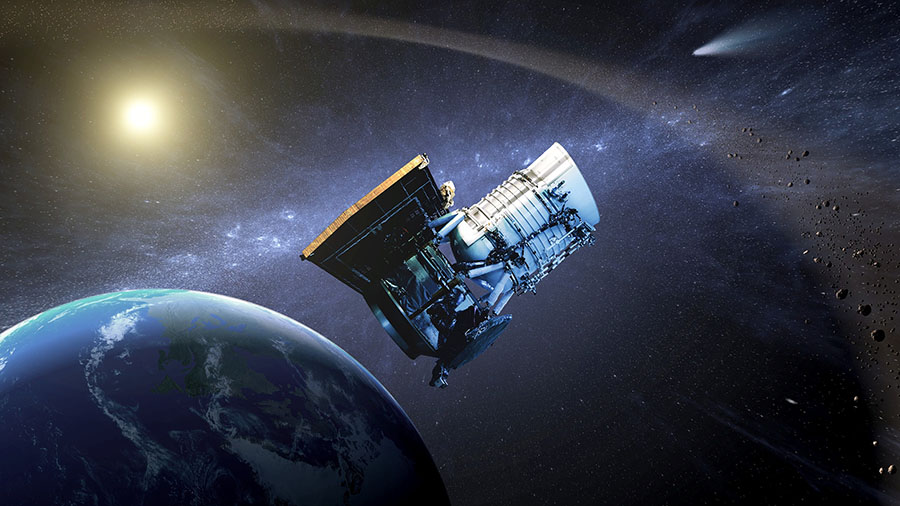2022-01-25
Back to listIn times of uncertainty, we rely on technology to provide us with a solid anchor. As we begin 2022, with the global pandemic continuing to bring turmoil and the global economy facing numerous challenges, artificial intelligence has become a key driving force of innovation and development, due to its rapidly evolving core technologies, stronger cross-domain connectivity, and the expanding collection of industry applications.
AI core technologies are making continuous breakthroughs, with more proven cases in integrated innovation. In pre-training large models, for example, research paths such as cross-modality, cross-language and knowledge enhancement have extended the boundary of large-scale models and inspired new potential for artificial general intelligence.
Additionally, in interdisciplinary and cross-domain research, AI constitutes a shared variable for scientific research and technological development. In fields such as quantum computing, biology and chemistry, "+AI" has become one of the most exciting research directions.
AI is also accelerating the development of industries such as autonomous driving, robotics, aerospace and healthcare. It has also played a key role in driving progress towards goals such as carbon emissions reduction and social inclusion.
Today, Baidu Research shares with you the top 10 technology trends of 2022. In this time of uncertainty, it is our hope that AI will illuminate the road of innovation and propel the ship of development.
Haifeng Wang, CTO of Baidu and Head of Baidu Research

Keyword: Large-Scale Pre-Training Model
The large-scale pre-training model reflects the trend towards knowledge enhancement, unified cross-modal modeling and multi-learning, reducing dependence on labeled data and accelerating real-world applications.
Self-supervised large-scale models trained on massive data can handle a range of AI tasks using one unified model and paradigm. This technology has overcome the bottleneck of conventional technologies by reducing dependence on large-labeled data, significantly boosting the effectiveness, universality and generalization of AI models.
The R&D direction is expected to shift in 2022 from increasing the model size to practical deployment. Large-scale models will continue to advance in performance, universality, generalization, operating efficiency and cost-effectiveness, complemented by technologies such as cross-modal unified modeling, prompt learning, continuous learning, model distillation and sparse modeling. At the same time, the threshold for realizing real-world AI scenarios such as smart office and smart finance will decrease. For example, built upon cross-modal large models, AI will drive the adoption of AIGC (AI Generated Content), which promises to spur creative cognition, improve content diversity and reduce production costs.

Keyword: AI for Science
AI for Science has emerged as a new area of research with the potential to change the paradigm of scientific research.
Last year, machine learning helped mathematicians discover two major conjectures. A combination of machine learning, multi-scale modeling and high-performance computing solved real-time simulation problems of ultra-large random quantum circuits. AI has also demonstrated great potential in scientific research, particularly for data processing, establishing new experiments and creating more efficient computational models.
The emerging AI for Science is expected to further fuse two scientific research paradigms: data-driven and theoretical deduction. In the next few years, AI will be integrated into many different fields such as mathematics, physics, chemistry, materials and engineering, as well as play a greater role in the progression of fundamental science.

Keyword: AI-Powered Computational Biology
Computational biology based on AI technology continues to develop rapidly, achieving breakthroughs in multiple foundational research and application scenarios.
Covid-19 has sparked an ever-growing demand for AI in the life science industry. For example, AI can be used to improve accuracy and speed of on-target genome editing or predict protein folding structures. The success of mRNA vaccine technology has further pushed forward the development of RNA or protein-based macromolecules and vaccinations.
AI-powered computational biology is poised for more breakthroughs in fundamental research and applications, ranging from protein-based drug design, drug compounding, and drug screening to mRNA-based monoclonal antibodies, cancer therapy and other immunotherapies. The confluence of AI and computational biology will significantly accelerate drug development, as well as reduce the cost and facilitate precision medicine and personal therapies.

Keyword: Privacy Computing
Privacy computing has attracted growing attention in recent years. It will provide fuller utilization of data and create an infrastructure that builds stronger user confidence.
Security and compliance have become essential to unlock the value of data amid the rise of global regulations on personal information and data security.
Privacy computing technologies such as trusted confidential computing and federated computing have risen to prominence because they address data security protection, data sharing and circulation from a technical perspective. With the improvement of performance in privacy computing technology, mutual promotion of technology and compliance standards and multi-party collaboration to enhance technical credibility, best practices for relevant applications can be developed in scenarios such as computational biology, financial analysis and data transactions.
In the long run, privacy computing technology may push encrypted data circulation and computing by default, gradually establishing an infrastructure for user confidence.

Keyword: Integration of Quantum Hardware and Software
The integration of hardware and software in quantum computing is being more widely implemented, as real-life demand accelerates the merging and innovation in between quantum computing and other industries.
In 2022, quantum chips' design, preparation and measurement, and control technologies are expected to improve continuously. The number of qubits will increase in scale. More breakthroughs will be made by reducing noise or adapting to noise. Quantum software and services will develop in a cross-platform direction, with users receiving more abundant quantum back-end options on cloud-native quantum computing platforms. Quantum computing platforms that carry quantum software-hardware integration solutions will gradually show their commercial potential.
With the deep integration and innovation of quantum computing and intelligent manufacturing, artificial intelligence, chemical medicine, fintech and other fields, numerous practical application solutions with significant quantum advantages will emerge. Government agencies, academia and the industry will collaborate more closely to build high-quality quantum devices and cultivate quantum technology talent, taking the first steps toward creating a quantum computing industry chain.

Keyword: Autonomous Driving
Autonomous driving technology is entering a new driverless stage, as multiple “Robocar” models connect technology with application scenarios.
Technological advances and policy regulation will bring driverless autonomous driving closer to reality in 2022. In particular, the Robocar represents the next generation of vehicles that will give rise to a revolution in transportation.
Autonomous driving is permeating a wide range of usage scenarios, such as passenger vehicles, public transits, road freight, warehouse distributions, retail, sanitation and special operations in mines and ports, creating remarkable value and further promoting social progress.

Keyword: Deep Space Exploration
AI and aerospace technology are unlocking new possibilities for the intelligent exploration of deep space.
Deep space exploration is the ultimate embodiment of humanity’s curiosity towards the universe. There is an increasing demand for autonomous spacecraft to conduct scientific explorations and mine resources on the moon or other planets, as well as to further explore outer space.
In the field of construction machinery automation, 24-hour continuous unmanned excavation has been achieved. The autonomous environment perception and motion planning algorithms used in rovers can also enable sensors with functions such as autonomous obstacle avoidance and decision-making, as well as flexible autonomous operation of a robotic arm. In addition, AI technology is also expected to play a key supporting role in the detection and repair of spacecraft damage, the construction of digital twin simulation laboratories and the detection and analysis of deep space big data.

Keyword: Human-Machine Symbiosis
Social distancing restrictions have added impetus to human-machine symbiosis. The combination of virtual and real intelligent interaction will soon become a part of work and life.
While the global pandemic continues to force humanity to live under social distancing, the development of digital and intelligent technology has given us an opportunity to narrow this distance, accelerating the symbiosis between people, digital avatars and robots.
This change is supported by the continuous progress of AI technologies such as vision, speech and natural language processing, as well as XR in cross-modal understanding and continuous learning, backed by the integration of hardware, network, computing, ecosystem platform content and many other fields. All these have formed a cross-technical support system.
With the acceleration of the integration and innovation of various advanced information technologies, more platforms for the combination of virtual and real and intelligent interaction for industry and consumer scenarios will emerge, enhancing the deep integration of the digital economy and the real economy and enriching people's work and life experience.

Keyword: Green AI
AI development increasingly takes into account green and low-carbon factors, helping to achieve carbon peaking and carbon neutrality goals.
As AI technology accelerates and integrates innovation with various industries, data centers and large-scale AI computing are generating important social value, but at the same time posing challenges in the form of energy costs and environmental impact. Today, the world is vigorously pushing for energy conservation and carbon emissions reduction, making it urgent to develop a more environmentally friendly “green AI” technology to reduce the energy consumption of model training and deployment.
In the next few years, “green AI”-related technologies will continue to flourish, building systems around energy-efficient architecture design, training and reasoning strategies and data utilization to form evaluation benchmarks that consider both performance and energy consumption. It is also expected that more AI processors with higher computing power and lower energy consumption will continue to be invented. Leading AI companies will build large-scale intensive models to improve downstream performance and reduce overall energy consumption costs; policies will encourage the construction of green and low-carbon data centers and AI technology will be applied to improve infrastructure energy efficiency ratios and other measures.

Keyword: Inclusive AI
AI will become more inclusive, with an emphasis on value creation allowing more attention to be focused on the needs of SME and minority groups.
Inclusive AI not only relates to AI practitioners, but also to the wider population who will benefit from AI.
Open-source platforms centered on deep learning frameworks have greatly lowered the development threshold of AI technology. Public datasets, large model bases and regional intelligent computing centers will be further developed to help small and medium-sized enterprises achieve cost reduction, increase efficiency and stimulate innovation. A national AI training system will also be gradually built to promote the reemployment of traditional industry personnel through AI science education.
The development of AI should also benefit all groups in society. With policy guidance and the promotion of the ESG concept of sustainable development, the focus of enterprises will shift to value creation. As AI service providers pay more attention to the needs of minority groups such as the elderly and children, they will develop inclusive AI services and products that allow everyone to enjoy the digital world.